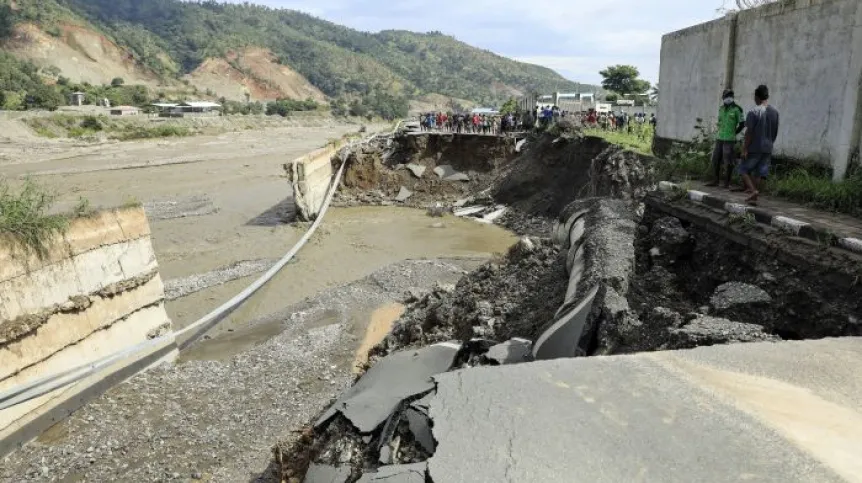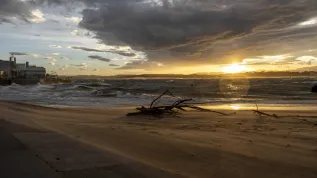
Equatorial tropical waves contributed to the formation of cyclone Seroja, which hit Indonesia in 2021. A cyclone in this area, close to land, is a rare phenomenon; it may be related to climate change, says Beata Latos, the first author of the publication in Nature Communications.
Determining the initial conditions for the formation of each cyclone remains one of the greatest challenges for scientists. Researchers can identify favourable conditions, but the answer to the question why a particular cyclone developed often requires several years of research.
This was the case with cyclone Seroja, which killed at least 272 people in Indonesia and East Timor in March and April 2021. From a scientific point of view, this case was unique, because cyclones usually do not occur in the equatorial zone and close to land. And this one also caused a lot of damage - the losses were estimated at 475 million dollars.
“Around the equator, the Coriolis force is low, which is why cyclones do not occur in this area. They most often develop between 10 and 20 degrees, in the direction from the equator to the poles. It was also unusual that Seroja developed very close to land, and not - as it usually happens - in the open seas,” said Latos, who, studies the impact of tropical waves on the formation of extreme precipitation and floods as part of her doctoral dissertation at the Institute of Geophysics of the Polish Academy of Sciences.
A tropical wave is a recurring atmospheric phenomenon in the tropics, associated with changes in pressure, wind, temperature and rainfall. Different tropical waves can interact, spin up the vortex and accelerate the development of a cyclone.
Latos said: “When the cyclone formed, I began to wonder if the tropical waves I study could have contributed to the formation of the cyclone. Together with a team of scientists from France, the US, Indonesia and the UK, we analysed the data and determined that several tropical waves met in one place and gave the driving force to Seroja. This is not the first published article on the influence of tropical waves on cyclone formation - but it is the first documented case in an area so close to the equator.”
Latos and her team's findings may be important from the point of view of climate change research.
She said: “It can be hypothesized that as the global temperature increases, there will be more cyclones. My research only speaks of this possibility, but does not confirm it yet. It is also unclear whether more tropical waves will form under the influence of the changing climate.
“The current model scenarios of the Intergovernmental Panel on Climate Change (IPCC) do not take into account the impact of tropical waves. The results of my research may contribute to the introduction of changes and help to warn people living in areas at risk.”
According to Philippe Peyrillé, co-author of the paper from the Centre National de Recherches Météorologiques Université de Toulouse, Météo-France, CNRS, tropical Cyclone Seroja teaches us that the presence of multiple tropical waves is yet another mechanism that can allow the 'perfect storm' to develop, even in unfavourable conditions such as those close to the equator. Monitoring such weather systems opens up rich prospects for tropical cyclone forecasting and research. (PAP)
PAP - Science in Poland, Urszula Kaczorowska
uka/ zan/ kap/
tr. RL













